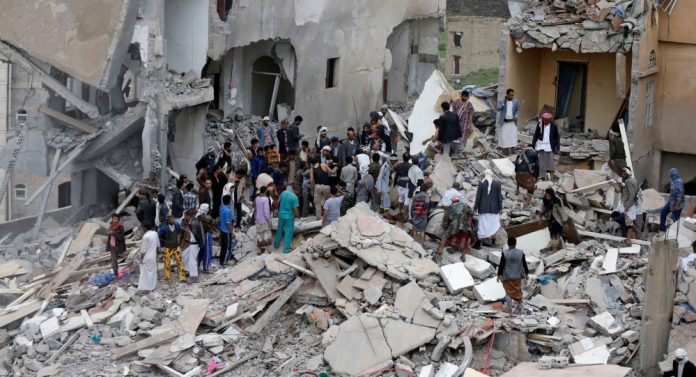alyemeni one/
As Yemen struggles with a violent aggression war , Yemen’s ancient cities future is uncertain.
The aggression in Yemen has, over the last five years, already devastated dozens of historic sites listed on the World Heritage List, in cities like Sanaa, Zabid, Shibam Hadramout, and on Socotra Island.
Other cities were nominated to join the list such as the old city of Saada and sites in the city of Taiz. Yemen’s tourism industry has died.
Since the 1980s, UNESCO has listed four Yemeni sites on the World Heritage List: the city of Shibam Hadramout, the ancient city of Sanaa, the city of Zabid, and Socotra Island.
All of these sites and cities have been destroyed, looted or occupied to some extent.
The coalition air raids targeted the old city of Sanaa on June 12, 2016, and several times thereafter, causing the extensive destruction of buildings over 500 years old.
It also targeted the historic city of Zabid several times.
Al-Qaeda furthered the destruction by bombing the city of Shibam Hadramout on November 22, 2015.
Sanaa dates back to the fifth century BC and, was one of the most important tourism destinations in Yemen.
The historic city of Saada, has suffered the most from the airstrikes.As well as,The Yemeni antiquities banks have not been excluded from the chaos of the airstrikes.
The history of ancient Yemen is divided into three phases: the first is the Kingdom of Sheba, the second is the period of the independent kingdoms of Hadramout, Qataban and Ma’in, and the third, and last in Yemen’s ancient history, is the era of Hamir.
Many monuments of Yemeni civilization are still buried. Archeological excavations continued until the beginning of the war.
Historians and archaeologists were forced to flee the country and stop working at sites like the Awam temple, also known as Muharram Balqis, 10 kilometers south of the city of Marib, capital of the ancient kingdom of Saba.
The area has received many people displaced by the war.
Meanwhile, The UAE has taken advantage of the local and global public’s preoccupation with the war to enhance its influence on Socotra Island, far from the military operations.
Using Chapala and Megh, two cyclones that hit the island and caused extensive damage to its infrastructure, as a pretext, the UAE has tightened its grip on the island under the purported claim of doing charity work.
The island of Socotra, known for its unique, endemic flora and fauna, and listed by UNESCO in the World Heritage list, is allegedly being destroyed by the UAE.
The UAE started “exploiting and plundering its natural resources of rare plants and birds and transferred them to Abu Dhabi,” according to statements by Nasser Baqzqouz, the Minister of Tourism.
According to the Baqzqouz, a number of rare plants and birds have been taken to Abu Dhabi.
Both the public and the government have accused the UAE of occupying the island.
Yemeni activists have launched a strong campaign against the UAE and demanded an end to what they called “the UAE occupation of the island.
” UAE officials have purchased land and built on its natural reserves, which is forbidden by Yemeni law.
Bombs dropped by the Saudi-led coalition have wreaked the most damage. The Marib Dam, was struck in 2015, leaving a deep gash in the well-preserved northern sluice gate.
The regional museum of Dhamar in the southwest, which contained thousands of artifacts from the Himyarite Kingdom, was completely destroyed.
More than 70 sites have been destroyed or severely damaged since the aggession began in 2015, chiefly from Saudi bombings.

